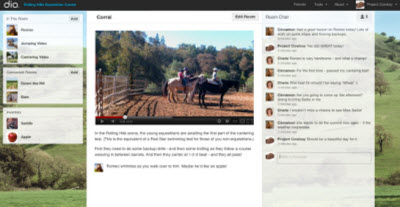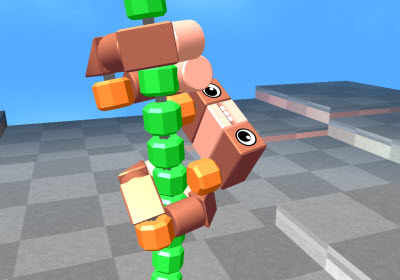Linden Lab operates the successful and lucrative virtual world of Second Life. But the company knows that not every creative person wants to live in an online world. So the company has diversified into the new market of the “shared creative space,” or a series of websites and apps that allow people to be more creative.
 The latest entry in this initiative is Dio, a website where people can assemble their memories much like the social network Facebook. But Dio also offers a chance to integrate more storytelling creativity and monetization into the content that people share with each other, said Rod Humble, the chief executive of San Francisco-based Linden Lab, in an interview with GamesBeat. Dio is opening up for beta testing today, and Linden Lab has also acquired a new game, Blocksworld, as part of its expansion into creativity apps on the iPad.
The latest entry in this initiative is Dio, a website where people can assemble their memories much like the social network Facebook. But Dio also offers a chance to integrate more storytelling creativity and monetization into the content that people share with each other, said Rod Humble, the chief executive of San Francisco-based Linden Lab, in an interview with GamesBeat. Dio is opening up for beta testing today, and Linden Lab has also acquired a new game, Blocksworld, as part of its expansion into creativity apps on the iPad.
Dio follows the path of Linden Lab’s Patterns and Creatorverse applications — which blend games, open-ended creativity, and the simple accessibility of apps — to create applications where users can express and share their own creativity. As virtual worlds become less popular, Linden Lab is using apps like Dio to create a new “second life.”
In Dio, you create places by adding text, photos, videos, and interactive objects to interconnected rooms. These rooms give the page visitor a spatial context for the shared content. You can keep the places private, share them with friends and family, or charge admission.
Dio is like a Facebook page, but with a sense of a place or interactive experience brought into it, said Humble. It isn’t hard to grasp at first, but an example shows you what is possible. You can put a link to an image to create a picture on a Dio page. Then you can give users a couple of different boxes that they can click on, giving them a choice. If you click on a box, it can lead to another box or unlock another “room” within the virtual space.
In this way, you can combine images, videos, and text in a kind of storytelling adventure, such as a walk through the city of Paris. You could re-create your wedding as it unfolded, show how to cook a meal step by step, or lead people through your home. Friends can leave comments or engage in live chat with you in your Dio space.
“Dio lets you relive the moment,” said Humble.
Users will be able to make money from ads on their Dio spaces at some point in the future. In addition, they will be able to create interactive experiences — such as games — that they can charge money for.
Dio is open to those who request invites, but it is still in early stages of development. Humble said that the company is embracing the “Minecraft model,” where the app maker created a beta version for a lower price and then began charging more for the final product.
“We start with ad revenue sharing, and then charge for it later,” said Humble. In the future, users will be able to monetize the Dio places they create, enabling them to profit from their own creativity.
“I’m really looking forward to seeing what people will create,” said Humble. “I use it to show my family back in England what my home looks like here.”
He hopes Dio will lead to a new digital economy like Second Life, which generated $500 million in user-to-user transactions last year.
In addition to unveiling Dio, Linden Lab also announced last week that it had acquired Blocksworld, an iPad app that allows people to create structures with toy blocks and then bring them to life. Linden Lab also acquired the team that made the app at Boldai in Linkoping, Sweden.
 “We are doing a series of acquisitions around creative tools and shared spaces,” said Humble. “This one was really high quality.”
“We are doing a series of acquisitions around creative tools and shared spaces,” said Humble. “This one was really high quality.”
The app has its own kid-friendly scripting language that allows you to connect blocks together, much like in Minecraft or Roblox. Humble believes it will be popular because, like those other Lego-like apps, it is easy to get your head around building something with blocks.
“The more complex you get, the easier it gets to make something that looks bad,” said Humble. “With blocks, you know it is not realistic art, and the key is making it easy.”
It was built by a small team in Sweden with fewer than 10 employees.
Check out the concept video of Dio.
[youtube=http://www.youtube.com/watch?v=na2OJ1YA7CI]
Here’s a video of Blocksworld.
[youtube=http://www.youtube.com/watch?v=6zgFKGaFcAs]


